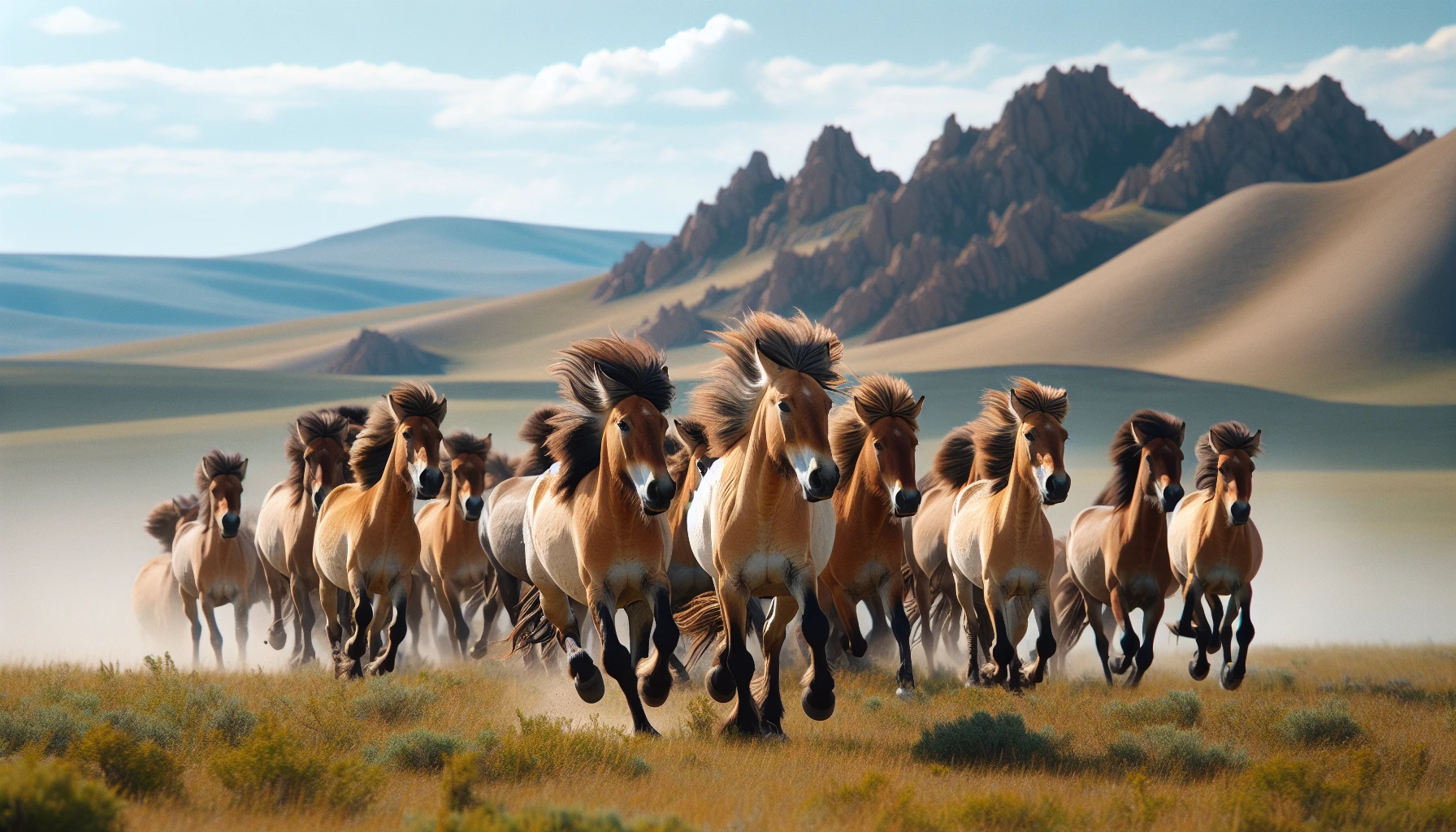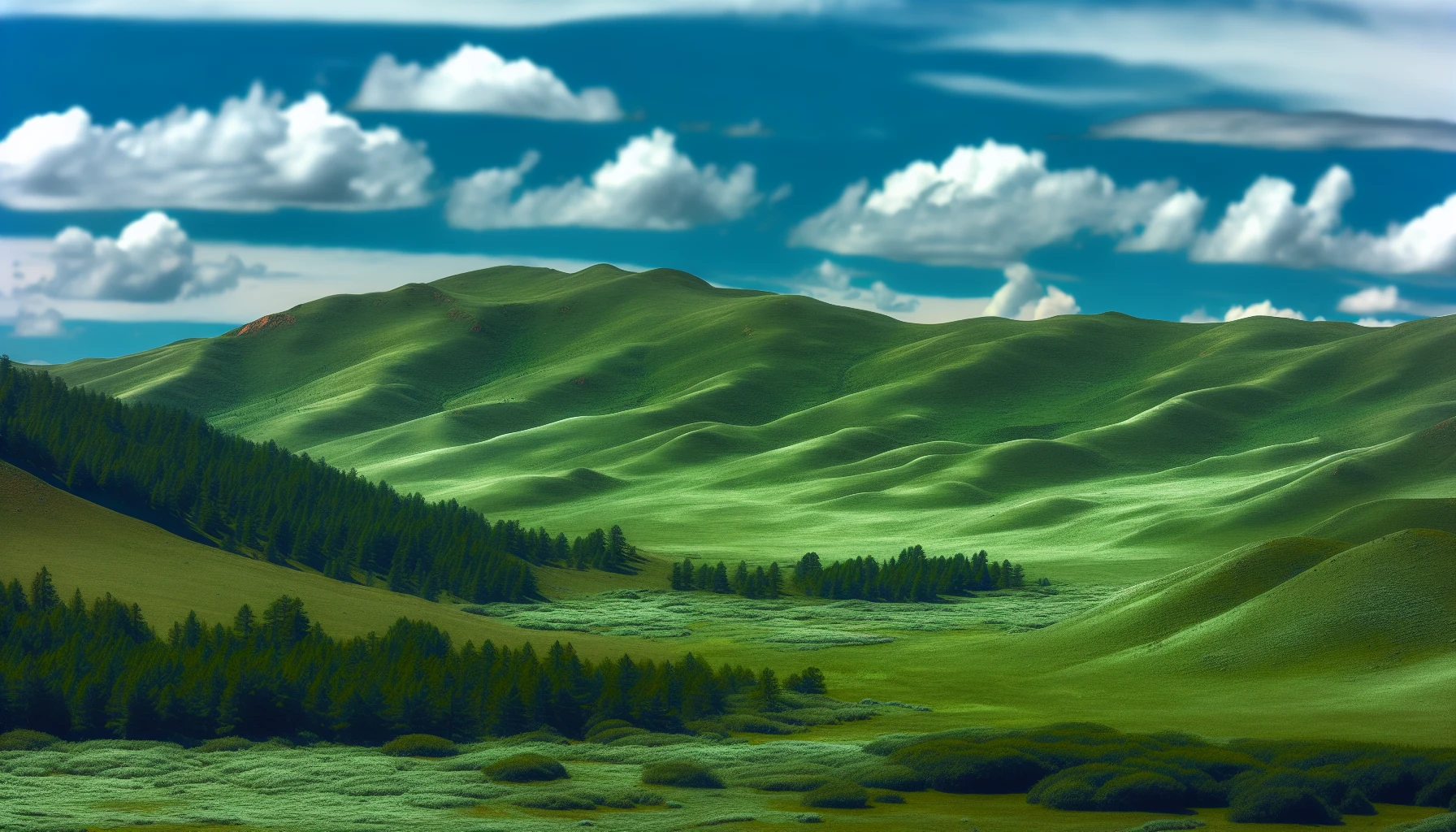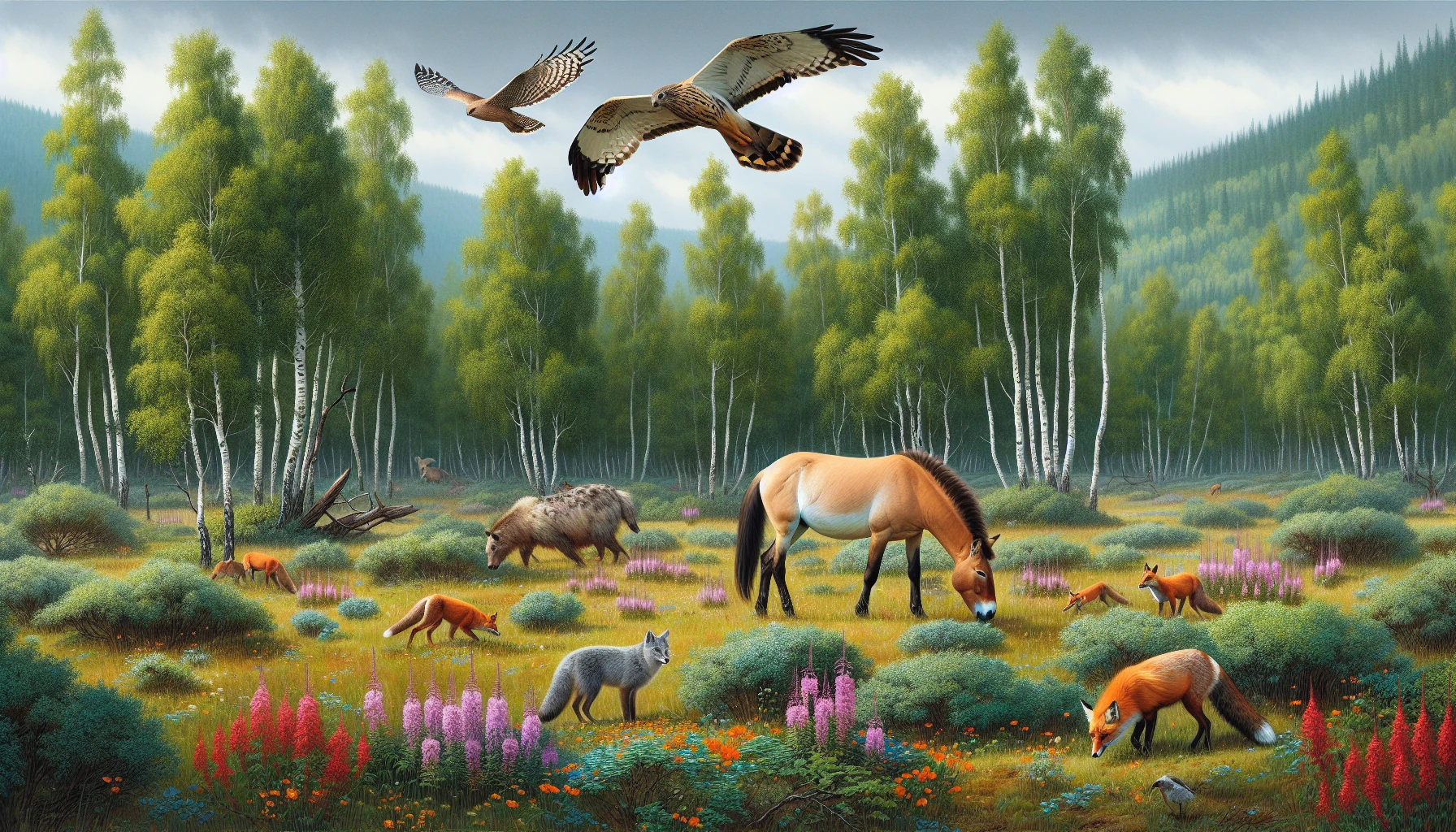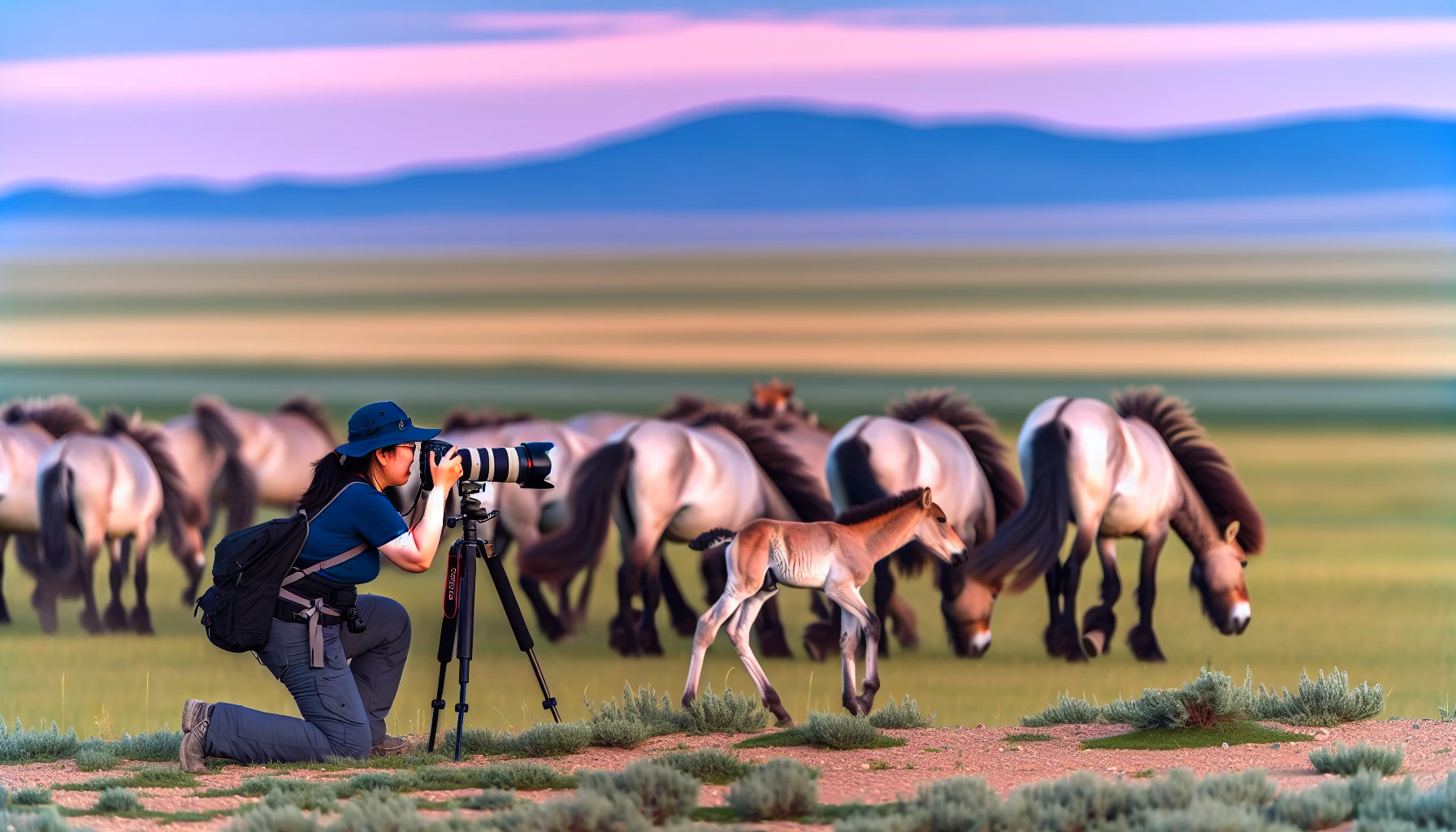Watching Wild Horses in Khustain Nuruu National Park
Contact us for travel suggestions
Experiencing the Wild: Watching Wild Horses in Khustain Nuruu National Park
Imagine standing amidst the vast landscapes of Khustain Nuruu National Park in Mongolia, witnessing the last truly wild horse species, the Takhi or Przewalski’s horse, roaming free in their natural habitat. This unique experience of watching wild horses in Khustain Nuruu National Park brings you closer to nature and offers an opportunity to explore the diverse ecosystem that supports these majestic animals. Are you ready to embark on an unforgettable adventure? Read on to learn more about Khustain Nuruu National Park and how to make the most of your visit.
Highlights of watching the wild horses
- Explore the last wild horse species in their native habitat at Khustain Nuruu National Park.
- Understand and observe horse behaviors to ensure safe wildlife photography.
- Participate in guided or self-guided tours, safaris, and adventure activities for an immersive cultural experience.
Discovering the Takhi: The Last Truly Wild Horse Species

The Przewalski horse, also known as the Takhi or Mongolian wild horse, is the last remaining species of wild horses left, native to Mongolia. Unlike domestic horses, which have been bred and tamed for centuries, the Przewalski’s horse has managed to retain its wild nature and genetic diversity.
Currently classified as an endangered species, it is estimated that there are more than 400 feral horses, also known as wild horses, in the Khustain Nuruu National Park. Although they were declared extinct in the wild in the 1960s, reintroduction efforts have successfully brought them back to their native habitat in Mongolia, China, and Kazakhstan, making them the only wild horse species to have achieved this feat. With the wild horse left to thrive in its natural environment, the park continues to be a sanctuary for these majestic creatures.
Spotting Przewalski's Horses in the Wild
The best way to spot Przewalski’s horses in their natural habitat is to visit Khustain Nuruu National Park, where they have been successfully reintroduced since 1992. These horses have the following characteristics:
- Stockier build
- Shorter legs
- Dun-colored coat
- Faint leg stripes
To observe the horses without causing disturbance, it is recommended to join a guided tour or safari, or explore the park on foot or horseback. Keep an eye out for the animals during the evening, as they tend to be more active and easier to spot during this time.
Understanding Horse Behaviors
Przewalski’s horses exhibit unique behaviors and social structures that set them apart from domestic horses. They live in family networks, or harems, consisting of a dominant stallion, mares, and their offspring, typically in groups of 5 to 15. These horses communicate with one another through vocalizations, scent marking, and various visual and tactile signals, including ear tilts, grooming, and kicks.
By understanding their behaviors and respecting their natural habitats, you can observe these majestic animals without causing harm or disturbance.
Journey to Khustain Nuruu National Park

Located just 90 minutes from Ulaanbaatar, the capital city of Mongolia, Khustain Nuruu National Park offers a unique opportunity to observe the last truly wild horse species in their natural environment. The park is easily accessible, with a few hours of travel by car or bus on asphalt roads.
The optimal time to visit the park is between April and October when the climate is temperate and the horses are more active.
Planning Your Visit
Before embarking on your journey to Khustain Nuruu National Park, it is important to plan your visit accordingly. The park’s entrance fee is ₮ 22,000 per visitor, and you will need a current and valid passport or Mongolian Identity card and a valid driving license to enter.
While the park offers various guided tours and safaris, you can also opt for self-guided activities such as hiking or horseback riding to explore the park at your own pace. Make sure to book your tours and tickets online in advance to ensure availability.
Accommodations and Amenities
During your visit to Khustain Nuruu National Park, you can enjoy a truly authentic Mongolian experience by staying in traditional Ger camps, which are white tents with beds inside, providing warmth and comfort. These camps offer accommodations, a restaurant serving various meals, showers, and modern toilets.
In addition to the traditional Ger camps, the park also has an information center where you can learn more about the park, the wildlife, and the history of the Przewalski’s horse.
The Ecosystem of Hustai National Park

Khustain Nuruu National Park is home to a diverse and thriving ecosystem, encompassing 50,600 hectares of land. The park is not only home to the last truly wild horse species but also a variety of plant and animal species that contribute to the overall health and balance of the ecosystem.
By visiting the park, you can gain a deeper appreciation for the importance of conserving these unique environments and the role they play in supporting the lives of the majestic animals that reside within them.
Flora and Fauna Beyond the Horses
While the Przewalski’s horses are undoubtedly the main attraction of Khustain Nuruu National Park, the park is also home to a variety of other flora and fauna. With approximately 200 species of forage plants, 250 species of melliferous plants, and over 200 species of medical plants, the park boasts a rich array of plant life that supports its diverse animal inhabitants.
Some of the other fauna that can be observed within the park include red deer, marmots, and more than 200 bird species, including the Cinereous Vulture and the Steppe Eagle.
Conservation Initiatives
Protecting the unique ecosystem of Khustain Nuruu National Park is of utmost importance. The park is managed by the Hustai National Park Trust (HNPT), which has enrolled the park as a member of the International Union for Conservation of Nature (IUCN) since 2007. Additionally, the park has been certified as a member of the world biosphere network of natural reserves by the Man and the Biosphere Reserves organization of UNESCO in 2002.
The success of the park in wildlife protection is due in part to its self-financing model, which relies on its own income and resources.
Engaging with Local Culture
During your visit to Khustain Nuruu National Park, you will have the opportunity to engage with local culture and communities that have a strong connection to the park and its inhabitants. By participating in traditional performances, demonstrations, and workshops, you can gain a deeper understanding of the customs and practices of the local community, as well as the cultural significance of the park and its wildlife.
Cultural Experiences in the Park
A variety of cultural experiences are available within the park, including:
- Traditional performances such as throat singing, horse fiddle music, and Mongolian dancing
- Visiting local nomadic families to learn more about their way of life
- Participating in activities such as archery and horseback riding
By engaging with the local culture, you can gain a deeper appreciation for the unique heritage and traditions that surround the park and its inhabitants.
Community Involvement
The local communities surrounding Khustain Nuruu National Park play a vital role in the park’s conservation efforts and sustainable tourism practices. By purchasing locally made products such as cashmere, you can support the livelihoods of local herders and contribute to the overall well-being of the community.
In addition, the park has implemented community-based tourism initiatives that involve local management of natural resources and cultural landscapes, further promoting sustainable practices and community involvement.
Wildlife Photography Tips

Capturing stunning images of the Przewalski’s horses and other wildlife in Khustain Nuruu National Park can be a truly rewarding experience. However, it’s important to follow best practices when photographing wild animals to ensure their safety and well-being. With the right gear and camera settings, you can create lasting memories of your visit to the park while still respecting the natural environment and its inhabitants.
Best Practices for Ethical Wildlife Photography
When photographing wildlife, it’s essential to prioritize the well-being of the animals and their environment. Some best practices for ethical wildlife photography include:
- Maintaining a safe distance
- Wearing appropriate clothing and protection
- Being patient and observant
- Studying the animal and its behavior before capturing images
By adhering to these guidelines, you can ensure that your photography not only results in beautiful images but also contributes to the conservation of the park’s unique ecosystem.
Gear and Settings Recommendations
To capture the perfect shot of the park’s inhabitants, it’s important to have the right gear and camera settings. Recommended gear for wildlife photography includes the Nikon Z9, Canon EOS R3, Canon EOS R5, Canon EOS R6 II, Sony A1, and Sony A9 series, as well as the 70-200mm f/2.8 lens. For capturing moving animals, the optimal camera settings are shooting mode: Aperture priority, ISO: Set in the mid-range, around 400-800, Shutter speed: 1/250s to 1/2500s, depending on the animal, Aperture: f/2 to f/6, depending on your lens.
By mastering these settings and techniques, you can improve your wildlife photography skills and create stunning images of your visit to Khustain Nuruu National Park.
Adventure Activities in and Around the Park

Khustain Nuruu National Park offers a variety of adventure activities for visitors, catering to a range of interests and fitness levels. Whether you prefer guided tours and safaris or self-guided adventures, there’s something for everyone to enjoy.
From hiking and horseback riding to birdwatching and exploring the park independently, the possibilities are endless.
Self-Guided Adventures
For those who prefer to explore the park at their own pace, self-guided adventures are also available. Visitors can partake in activities such as hiking, horse trekking, and birdwatching, immersing themselves in the park’s natural beauty and diverse ecosystem. Remember to bring an adequate supply of water and sustenance, don suitable attire, and consult the meteorological forecast prior to embarking on a self-guided excursion.
Summary
In conclusion, Khustain Nuruu National Park offers a truly unique and unforgettable experience, allowing visitors to witness the last truly wild horse species in their natural habitat. From engaging with local culture to embarking on adventure activities and capturing stunning wildlife photography, the park provides an opportunity to connect with nature and learn about the importance of conservation. So why not start planning your visit to Khustain Nuruu National Park and create lasting memories of this incredible destination?
Frequently Asked Questions
Can you ride Przewalski's horse?
Unfortunately, it is not advisable to ride Przewalski's horse as it is not domesticated. Mongolians call it takhi and consider it worthy of worship rather than riding or saddling up.
How many Przewalski horses are left in the world 2023?
Today, there are 1,900 Przewalski horses in the world, all of which descended from 14 wild founders that were caught between 1910 and 1960.
What zoos have Przewalski's horses?
The San Diego Zoo Safari Park is home to Przewalski's horses, which are given a varied diet of alfalfa, hay, and carrots.
Are there any truly wild horses left?
Przewalski's horses are the last remaining species of truly wild horses left on earth. All other horses labeled as “wild” are actually feral descendants of domesticated animals, who became feral after being left in the wild without human assistance.
What is the meaning of wildlife watching?
Wildlife watching is the activity of observing and enjoying animals in their natural environment. It is distinct from activities such as hunting and fishing, as its purpose is to observe rather than to capture or consume wildlife.
 Wild Horses observation in Mongolia
Wild Horses observation in Mongolia